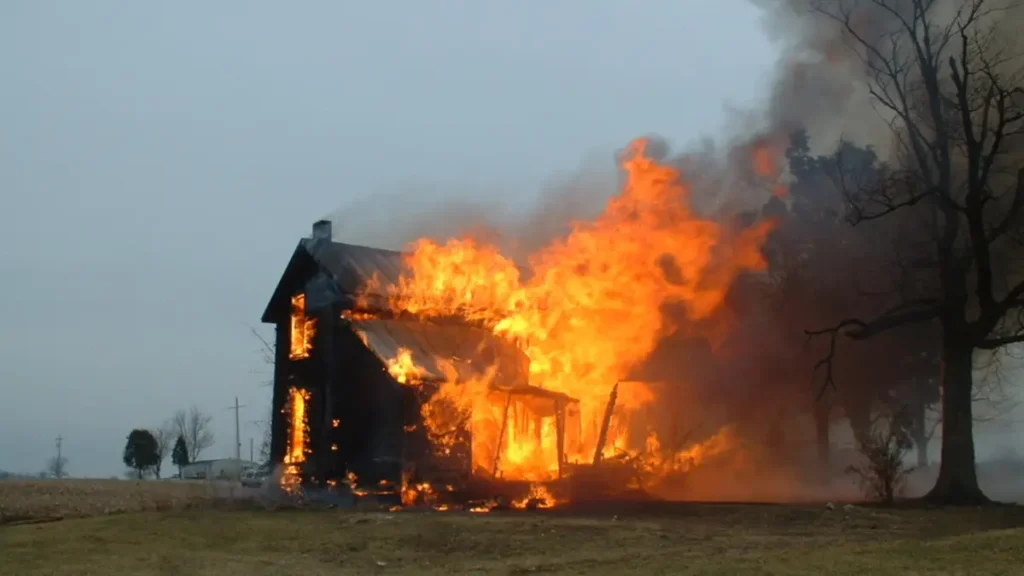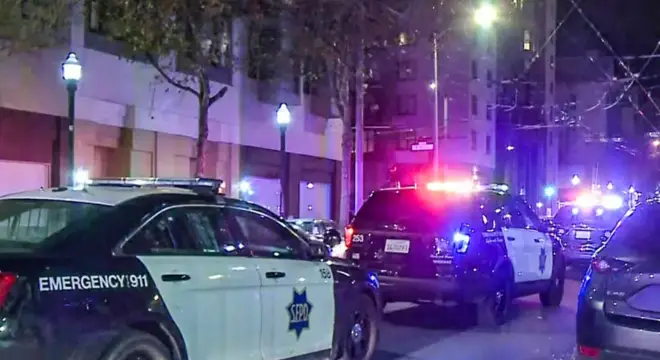Dog Killed in Avenel Home Fire While Residents Make Dramatic Window Escape
I want to start by laying out the facts as clearly as possible, because when something this heartbreaking happens in a quiet neighborhood, people deserve straight answers without the noise.
On Tuesday night, just after 7 p.m., a fire tore through a home on Cornell Street in Avenel. A family of four lived there. By the time the flames were visible from the street, the situation had already turned desperate. Two people had to jump from the second-floor windows to escape. Another person ended up with minor burns. And the family dog — trapped upstairs — didn’t make it out.
If you’ve ever heard someone scream for help in real time, you know the sound doesn’t leave you. One of the neighbors, a teenager who lives across the street, said he heard a scream, opened his blinds, and saw flames already rising. He ran outside. He saw the panic. He saw people shouting for help. And within minutes, police, firefighters, and EMS were pulling up, sirens bouncing off the houses.
By the time the fire was knocked down, the home was badly damaged — the kind of damage that leaves a family displaced overnight. By the next morning, the house was boarded up, a shell of what it was just 24 hours earlier.
The only thing investigators have confirmed so far is that the cause of the fire is still under review. And from what neighbors said, the family had only moved in a few months ago — which makes the loss even heavier.
If you were standing in that neighborhood last night, watching the smoke rise above your street, what would be the first thought running through your mind?
Eyewitness Accounts Reveal the Intensity of the Fire

When I went through the initial reports, one thing stood out immediately: every neighbor described the same two things — the screams and how fast the fire grew. And honestly, that tells you more about the situation than any official line ever could.
According to News12’s early report, people on Cornell Street heard shouting just after 7 p.m. A teenager across the street, Jaden Greene, said he heard a scream, looked out through his blinds, and saw flames already rising near the second floor. He ran outside, and what he saw next was chaos — people shouting “help,” neighbors scrambling, and smoke pushing out into the street.
Another neighbor, Daniel Gutzmore, didn’t even need to get close. His wife called him saying there was smoke coming from the house next door. By the time he stepped outside, emergency crews were already pulling up. He described it as “pretty intense,” and you could tell from the way he said it that this wasn’t just a small cooking fire gone wrong — this was a full-blown emergency unfolding within minutes.
Eyewitness accounts matter in a story like this because they show you the human side — the panic, the reaction, the split-second choices that people have to make. When someone says “I heard them screaming for help,” that stays with you. And honestly, it’s the kind of detail that reminds you how fast a normal evening can turn into something unthinkable.
It’s the same kind of shock neighbors described in Raleigh when an 82-year-old resident died in a house fire — people hear the alarms, the shouting, and suddenly the whole street changes.
How the Family’s Recent Move Adds to the Tragedy?
One detail that hit me harder than expected was something neighbors mentioned almost casually: the family had only lived there for about three months. They were still new to the block. Some neighbors hadn’t even met them yet.
It’s tough to imagine settling into a new home — maybe decorating rooms, planning routines, trying to build a sense of comfort — only for everything to disappear overnight. When a fire destroys a home, it’s not just the physical space you lose. It’s the sense of stability you were trying to build.
By the next morning, the house was boarded up. Charred siding. Blackened windows. The kind of scene that makes you stop and stare, even if you’re just driving past. And for the people living nearby, it was a punch in the gut. You don’t have to know a family personally to feel the weight of something like this. A new family moves in, full of hope, and suddenly they’re standing on the street watching smoke rise from their own home.
Moments like that change a neighborhood. They make everyone look at their own house and think, Would I be ready? Would I even notice the smoke in time?
It reminded me of a heartbreaking case in North Philadelphia, where a house fire claimed the lives of two young children and an adult — another situation where a family’s sense of normalcy disappeared in seconds.
Investigation Status — What Officials Have Confirmed
Whenever a house fire gets this serious, people naturally want to know why it happened. But here’s the reality: investigators don’t rush these conclusions. They can’t. There are too many variables — wiring, appliances, heating systems, structural issues, and sometimes even things left cooking or plugged in.
Right now, according to the fire department, the cause is still under investigation. And that’s normal. Once a fire damages the second floor, melts wiring, and destroys interior walls, it takes specialists time to figure out what actually started it.
Investigators usually look at burn patterns, test electrical panels, check appliances, and review witness statements. Sometimes they need engineers to rule out structural defects. Sometimes they wait for lab results. So if you’re hoping for a quick answer, it typically doesn’t work that way.
But when the cause does come out, it often reveals something simple — and that simplicity is what makes these incidents so unsettling. Most house fires start from everyday things we don’t even think twice about.
Emergency Response — Who Helped and How

One thing that becomes clear when you read through all the accounts is that the emergency teams in Avenel got there fast. Multiple neighbors said that by the time they stepped outside, police, firefighters, and EMS were already pulling up. When a fire spreads to the second floor this quickly, response time becomes everything — and in this case, it likely prevented an even worse outcome.
The Red Cross stepped in shortly after and provided the family with emergency financial assistance. If you’ve never been through a fire, you may not realize how important that support is. When your home is suddenly unlivable, you’re not thinking about insurance paperwork or claims. You’re thinking about where your kids are going to sleep that night. And the Red Cross fills that immediate gap when families are still in shock.
Moments like these remind you how crucial coordinated response is — neighbors calling 911 quickly, dispatchers acting fast, crews arriving with the right equipment. These layers matter more than people realize.
I’ve been sharing quick updates on incidents like this — along with safety notes — through a small WhatsApp update stream. If you follow community alerts, you might find it useful.
Fire Survival Insights — What This Incident Teaches About Escape Safety
Whenever you read a story like this, you can’t help but imagine what you’d do if you were stuck upstairs and the smoke was already climbing the staircase. The truth is, second-floor fires are some of the most dangerous because your escape routes shrink fast. And when smoke hits a hallway, people panic — not because they want to, but because they can’t see a way out.
That’s likely why two people jumped from the windows. When you’re trapped, and there’s no time to think, you take the option that keeps you alive. Some homeowners don’t realize how quickly a fire can block a stairway. Sometimes it’s in minutes. Sometimes even less.
And then there’s the part that hurts most: the dog upstairs who didn’t survive. Pets get trapped more often than people think. They hide. They run toward familiar rooms. They get scared and freeze. And unless someone is able to reach them instantly, they don’t stand a chance.
There’s a simple takeaway here — one that’s not talked about enough: Your escape plan has to include your pets. Even if it feels strange to think about it now, the planning you do on a normal day might save a life on the worst night.
Most safety experts recommend:
– Keeping leashes near exit points
– Training pets to respond to alarms
– Making sure smoke detectors are working on every level
– Having a “window escape” tool in second-floor bedrooms
It’s not about being paranoid. It’s about being ready.
In another recent incident, firefighters in South Tallahassee managed to stop a rapidly spreading home fire before it took over the entire structure — a reminder of how much difference early detection and fast response can make.
What Happens Next? Updates to Expect in the Coming Days
After a major house fire, the recovery process moves slower than most people realize. From the outside, it might look like things are “over” once the flames are out. But for the family, this is where the real work begins.
Investigators will keep going through what’s left of the home until they can say with confidence what caused the fire. Sometimes that answer comes quickly. Sometimes it takes weeks. And until they know more, every update will probably be a small one — “still under investigation,” “awaiting inspection,” “pending review.” It’s not exciting, but it’s the reality of how fire investigations work.
The family, meanwhile, has to figure out their next steps. They’ll need temporary housing. They’ll need to navigate insurance. They’ll need documents replaced, clothes, basic necessities. It’s a long, exhausting chain of tasks — especially when you’re doing it right after losing your home.
Local agencies and groups will likely stay involved for a while. The Red Cross often checks in to make sure families have what they need in the first few days. Neighbors sometimes start donation drives or offer support. And once officials release the cause, there might be a community conversation about fire safety, especially if the cause is something that could affect similar homes nearby.
For now, the only thing certain is that more information will come out gradually. And when it does, it’ll help people understand not just what happened, but what can be learned from it.
If you were living on that street, what’s the first question you’d want answered right now?
If you want to stay updated on serious home fires and safety insights, you can explore more community-impact reports in our home incidents section.
Disclaimer: This article is based on information available at the time of writing, including eyewitness accounts and early media reports. The official cause of the fire is still under investigation, and some details may change as authorities release updates. Readers should verify any developing information with local officials or trusted news sources.


